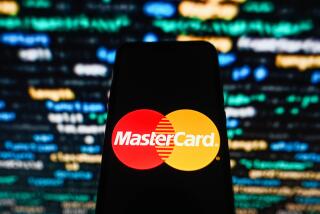Careful Consumers Can Avoid High Rates Hiding in Some Pay Phones
- Share via
Strange pay phones these days are a lot like strange dogs--most of them are perfectly nice, but some of them bite.
Even sophisticated travelers can become confused when dealing with unfamiliar telephones. Federal regulators and consumer advocates have a bit of advice: Be careful.
Pay phones are generating hundreds of complaints a month to the Federal Communications Commission, mostly from consumers who have had a bite taken out of their wallets, according to the agency.
The issue stems from deregulation and the now highly competitive marketplace in which telephone companies operate. The days when Ma Bell served the vast majority of U.S. telephones are long gone, and just as businesses and individuals have a wide choice of long-distance carriers, they also have a wide choice of pay phone services. Except that with pay phone services, they may not be aware of their choices--and that has been leading to some nasty surprises.
Approximately 200 companies provide operator services for pay phones, according to the FCC. Some are big, familiar names and others are tiny companies that serve only a small area. And though the vast majority of the billions of calls from pay phones go through just fine every year, some companies charge rates that the average consumer might find startling.
The situation causes immense uncertainty for travelers and a substantial chance that you could “get ripped off,” said Patricia Proferes, director of specialty brands at MCI Communications Corp.
“You go to a pay phone and you’re not sure anymore what carrier is going to take your call and what rate you are going to pay,” she said. And it’s not just pay phones, she said; hotels may also use high-priced carriers.
Typically, problems arise with long-distance calls or others in which the caller doesn’t use coins to pay. If you simply go up to a pay phone, dial 0, and make your call, you will be billed by the company serving that phone and at its rates.
And since many people use calling cards or other billing systems, they often don’t find out the amount of the charge until their bill arrives. A Bell Atlantic Corp. spokesman said he had a complaint from a customer who used a credit card to call across town in Wilmington, Del., on a non-Bell Atlantic pay phone and was charged $6.19. “Normally that’s a 50-cent call,” the spokesman said.
Many grumble and pay, but others are outraged enough to complain. Local phone companies get many such complaints, but generally they’re only the billing agent. That “was not our phone and not our service,” the Bell Atlantic spokesman said of the $6 call.
Consumers can complain to the FCC or the carrier, which will sometimes refund part of the charge.
But the agency and major long-distance carriers said the best thing is to make sure you use a carrier you trust, usually the one that provides your long-distance service at home.
The way to do that is to first determine which carrier serves the phone you are using and, if it is one you don’t know or don’t trust, “dial around” it to your own carrier.
FCC rules require carriers to place their name, address and toll-free number in plain view on or near the phone. If you’re not familiar with the company but might want to use it, call and ask for its rates.
Not all phones have such notices, and some notices are incorrect. To double-check, said Kathleen M.H. Wallman, chief of the FCC’s Common Carrier Bureau, “All you have to do is pick up the receiver and dial 00, and that will give you a real live person or an automatic prompt” that will allow you to identify the carrier and get other information such as rates.
Finally, when you make your call, there will be a pause between the time you finish dialing and the time the call is connected. In that interval, there should be an audible message telling you who is handling the call. “That’s the ‘bong,’ the bong and the name,” Wallman said. “That’s the point at which you get an audible double-check. If it’s not what you thought it was, you can hang up.”
Having identified the company serving the phone, you can use it or dial another. Even if you are making a local call, you can save money with the long-distance carrier.
There are several ways to dial around. One is to use the five-digit access code for the carrier you want. The “10XXX” codes, called that because they all begin with 10 and end with three digits that identify a carrier. All carriers have one. AT&T; Corp.’s code is 10-288 (10-ATT). MCI’s is 10-222. You get a message identifying the carrier; then you can dial your call.
The big carriers also have toll-free numbers.
The advantage of a toll-free number is that it can be reached from hotels or other phones where access to 10XXX might be blocked, AT&T; spokeswoman Lori Ponoroff said.
But just because you dialed the right digits, don’t think you’re safe, Proferes said. “There are some companies out there that are so unscrupulous that they very illegally install a device on the telephone that will even divert the 800 call. We are constantly chasing them down,” she said.
Albert Crenshaw writes for the Washington Post. If you have experiences to share or suggestions for Executive Travel, please write Executive Travel Editor, Business Editorial, Los Angeles Times, Times Mirror Square, Los Angeles, CA 90053; fax (213) 237-7837 or e-mail to [email protected]
More to Read
Inside the business of entertainment
The Wide Shot brings you news, analysis and insights on everything from streaming wars to production — and what it all means for the future.
You may occasionally receive promotional content from the Los Angeles Times.










